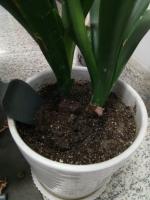How do Plants Transport Water Up?
Water is essential to all living organisms, and plants are no exception. As organisms that do not have a circulatory system, plants use a specialized system to transport water and nutrients from the soil up to their leaves. This system is called the xylem, and it is made up of tiny tubes that run vertically up the stem of the plant. But how do plants transport water up to the top of a tall tree? In this article, we will explore the mechanics of water transport in plants.
The Role of Roots
The first step in water transport in plants is the uptake of water from the soil. This process is carried out by the roots of the plant, which are designed to both absorb water and anchor the plant in the soil. The roots do this by using their root hairs to absorb water molecules from the soil, which are then transported to the rest of the plant through the xylem.
Cohesion-Tension Theory
The mechanism that drives water up the xylem is known as the cohesion-tension theory. According to this theory, water molecules are attracted to each other through a process called cohesion. When water molecules are pulled up from the roots, they create a tension, which causes the water column to remain intact and rise up the xylem.
The Role of Transpiration
Transpiration is the process by which water evaporates from the leaves and stems of plants. This process creates a negative pressure, or suction, which pulls water up the stem and towards the leaves. The water molecules are then replaced by new molecules from the soil, which continue the cycle of water absorption and transport through the plant.
Vessel Elements and Tracheids
Finally, the structure of the xylem itself plays an important role in water transport in plants. The xylem is made up of two types of cells called vessel elements and tracheids. Vessel elements are large, hollow cells that are found in angiosperms, or flowering plants. Tracheids, on the other hand, are smaller, tapered cells that are found in gymnosperms, or non-flowering plants. Both types of cells are designed to efficiently transport water through the xylem, with vessel elements being more efficient in larger plants and tracheids being more efficient in smaller plants.
Conclusion
In conclusion, plants transport water up through their specialized system of tubes called the xylem. This system is driven by the cohesion-tension theory, which creates a suction that pulls water up the plant. Transpiration plays a crucial role in this process by evaporating water from the leaves and creating a negative pressure. Finally, the structure of the xylem itself, with vessel elements and tracheids, is designed to efficiently transport water through the plant. Understanding the mechanics of water transport in plants is essential for anyone interested in botany or agriculture.

 how many times do yo...
how many times do yo... how many planted tre...
how many planted tre... how many pine trees ...
how many pine trees ... how many pecan trees...
how many pecan trees... how many plants comp...
how many plants comp... how many plants can ...
how many plants can ... how many plants and ...
how many plants and ... how many pepper plan...
how many pepper plan...































